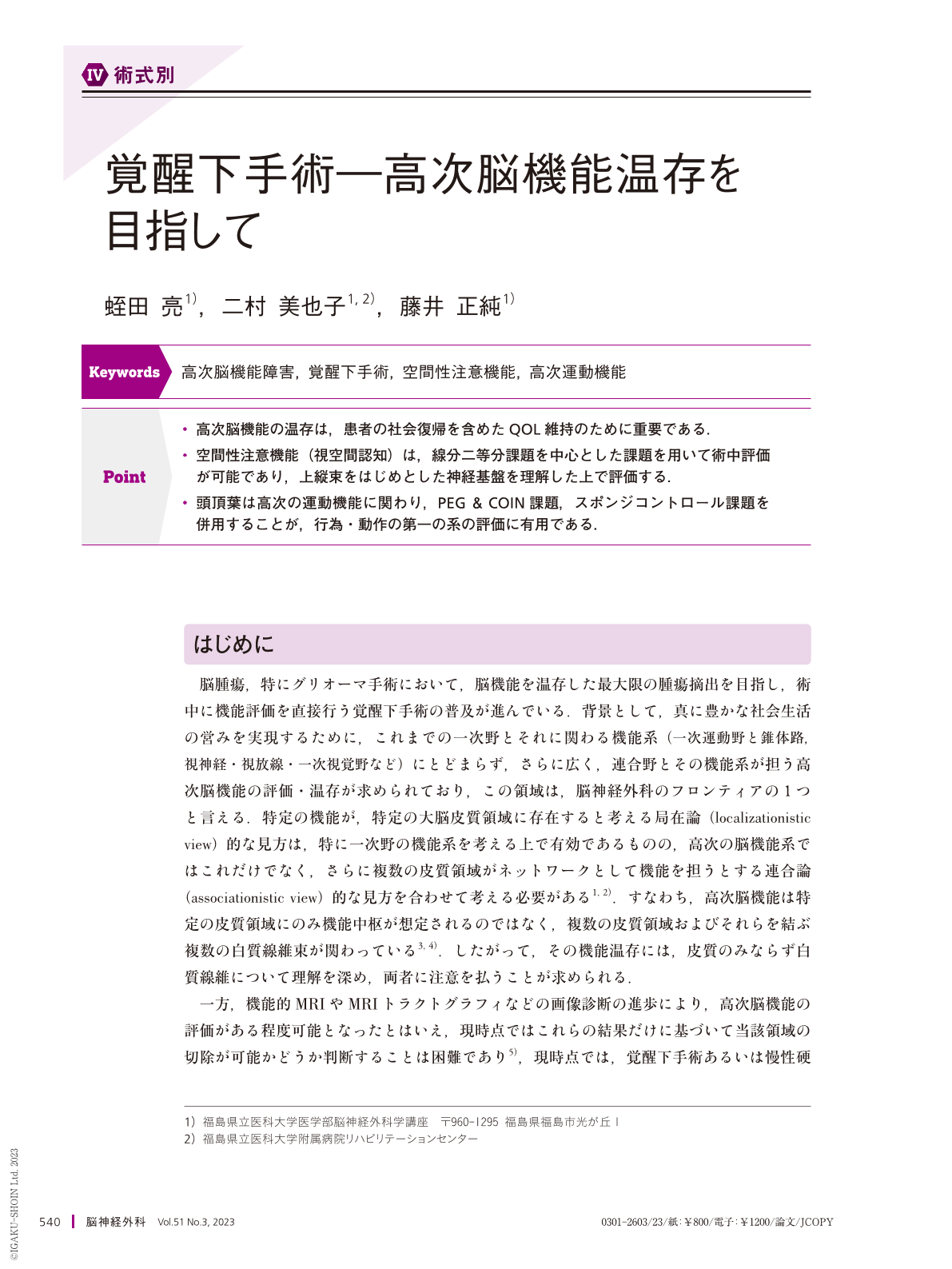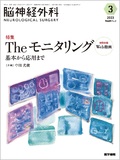Japanese
English
- 有料閲覧
- Abstract 文献概要
- 1ページ目 Look Inside
- 参考文献 Reference
Point
・高次脳機能の温存は,患者の社会復帰を含めたQOL維持のために重要である.
・空間性注意機能(視空間認知)は,線分二等分課題を中心とした課題を用いて術中評価が可能であり,上縦束をはじめとした神経基盤を理解した上で評価する.
・頭頂葉は高次の運動機能に関わり,PEG&COIN課題,スポンジコントロール課題を併用することが,行為・動作の第一の系の評価に有用である.
*本論文中、[Video]マークのある図につきましては、関連する動画を見ることができます(公開期間:2026年6月まで)。
Awake surgery for gliomas has become a widely accepted neurosurgical method worldwide. However, it is applied mainly to restore speech and simple motor functions, and intraoperative applications to restore higher brain functions have not been established yet. Preserving these functions is crucial to restoring the normal social lives of patients postoperatively. In this review article, we focused on preserving spatial attention and higher motor functions, and discussed their neural basis, as well as, the application of awake surgery practices using effective tasks. For spatial attention, the line bisection task is the most popular and reliable; however, other tasks, such as exploratory tasks, can be used, depending on the location of the brain. For higher motor functions, we developed two tasks: 1) the PEG & COIN task, which evaluates grasping and approaching skills, and 2) the sponge-control task, which assesses somatosensory-dependent movement. Although scientific knowledge and evidence are still limited in this field of neurosurgery, we believe that expanding our knowledge about higher brain functions and developing specific and efficient intraoperative tasks to evaluate them will eventually preserve patients'quality of life.

Copyright © 2023, Igaku-Shoin Ltd. All rights reserved.


